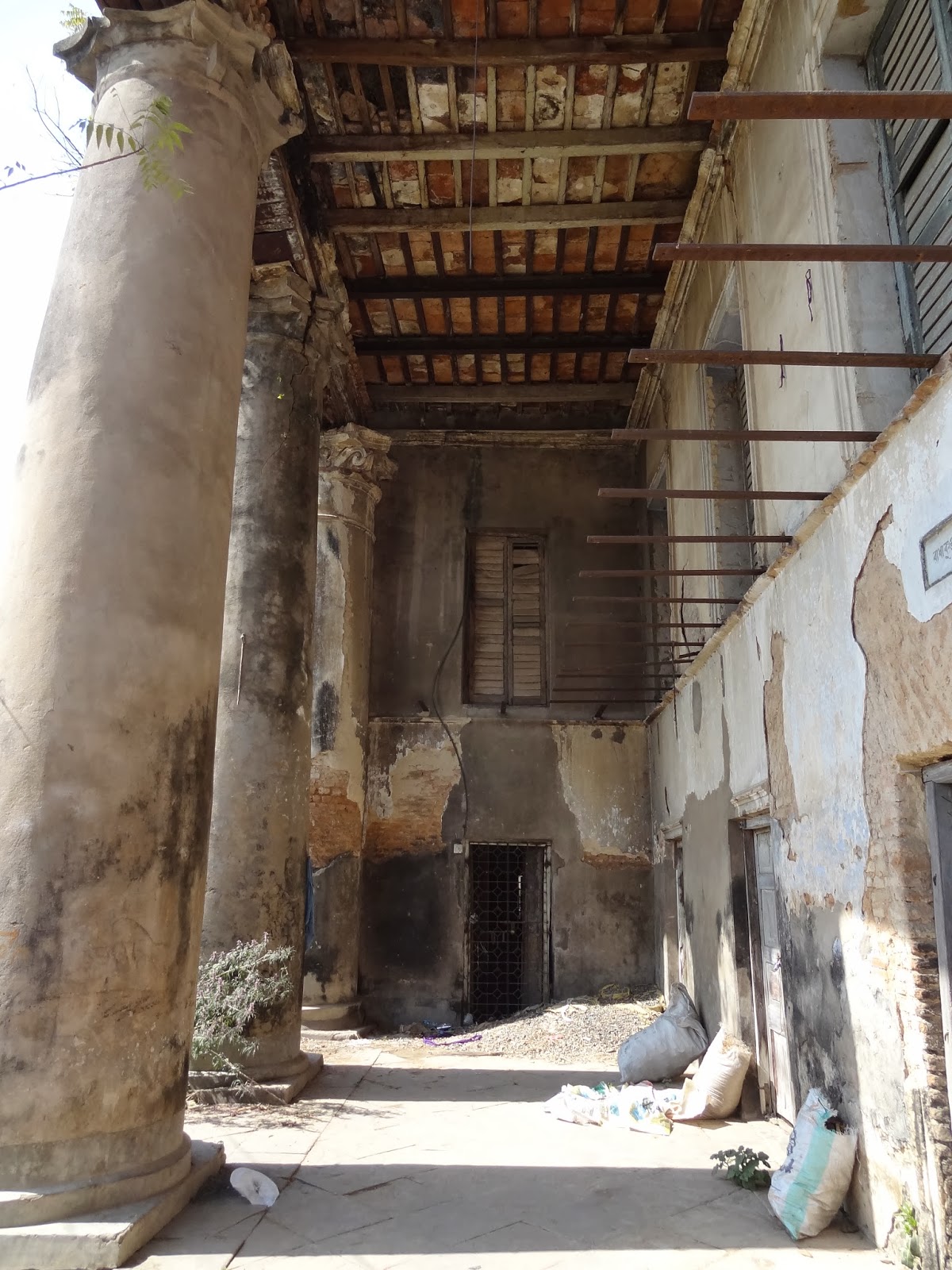
Located slightly north of Maniktala Market, on APC Road,
on the right, is the Nakhoda Muslim Cemetery, also known as the Nakhoda
Kabristan. Unfortunately, not many details are available about the cemetery,
although the name Nakhoda would seem to suggest an association with the Kutchi
Memon Jamaat, responsible for Kolkata’s principal mosque, in Chitpur. The word
Nakhoda, means mariner; the Kutchi Memons were primarily sea-faring traders.
The cemetery seems to be still active, as is proved by the graves of the
Usmans, who were buried as late as 2011.
 The cemetery overall is in an extreme state of neglect
and disrepair. Apart from damage, the fact that very little English is used on
tombstones and other markers, makes information very difficult to glean for
anybody not familiar with Urdu/Farsi/Arabic. The principal attraction of the cemetery is the grave of Maulana
Muhammad Khairuddin, who happens to be the father of Maulana Abul Kalam Azad,
one of the principal leaders of the Indian independence movement. Maulana
Khairuddin was a scholar, who married the daughter of a well-known Arab cleric
in Mecca, where Maulana Azad was born.
The cemetery overall is in an extreme state of neglect
and disrepair. Apart from damage, the fact that very little English is used on
tombstones and other markers, makes information very difficult to glean for
anybody not familiar with Urdu/Farsi/Arabic. The principal attraction of the cemetery is the grave of Maulana
Muhammad Khairuddin, who happens to be the father of Maulana Abul Kalam Azad,
one of the principal leaders of the Indian independence movement. Maulana
Khairuddin was a scholar, who married the daughter of a well-known Arab cleric
in Mecca, where Maulana Azad was born.On the grounds of the cemetery is also an ornate shrine, no details about which can be had from the plaques on it’s walls.
There are also some rather ornate tombs, such as this one.
The grounds of the cemetery are now also used for processing scrap iron.
There is no restriction on entry and photography, and
visitors are few.





















